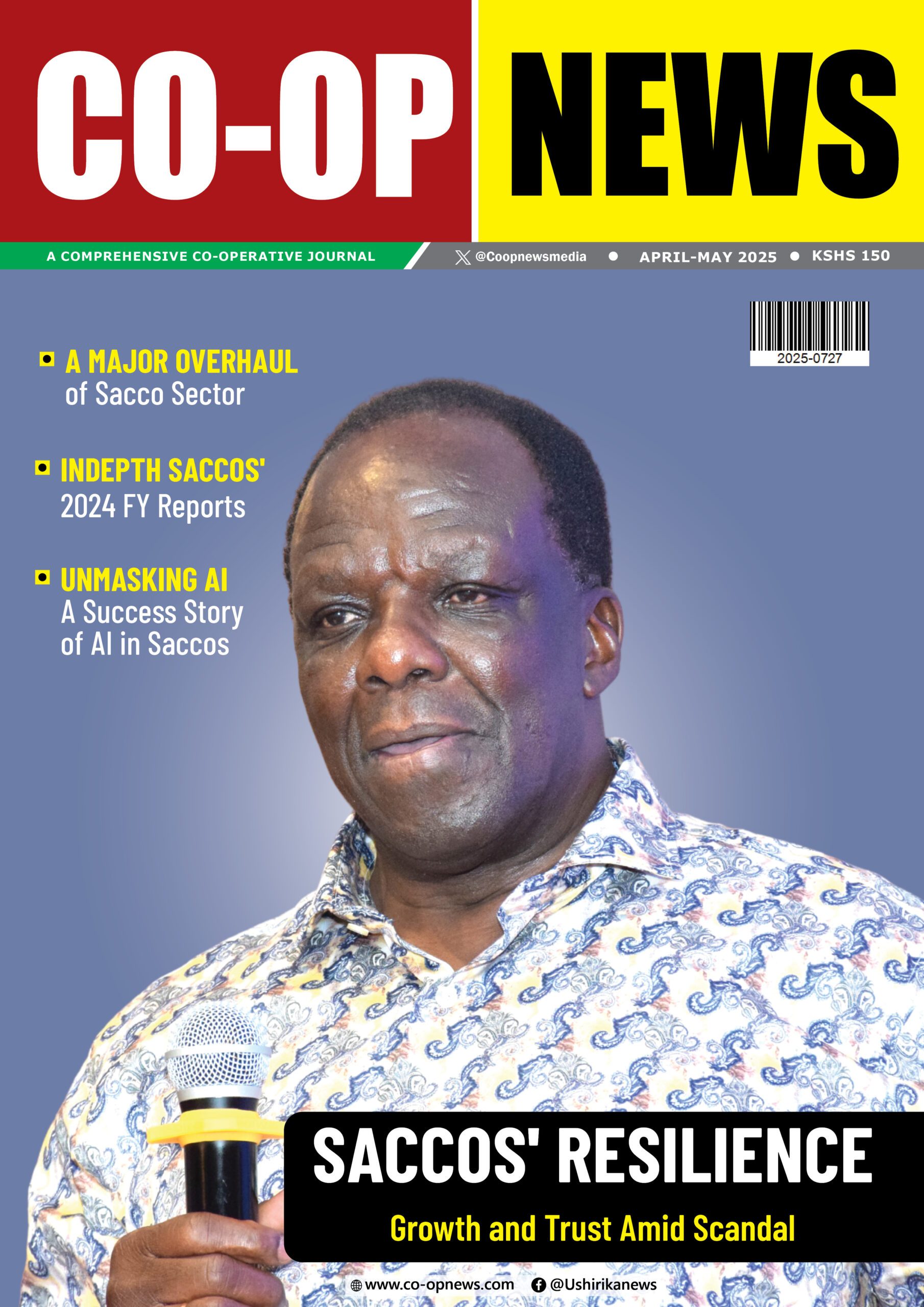Cooperative Societies now have a better grasp of the areas used in the adjudication process to determine the winners of the 2023 Ushirika Day awards.
The questionnaires were distributed through email to 823 societies, and 13 per cent were able to submit the details on time, translating to 107 participants taking part, an improvement from the 105 that participated in 2022.
The Cooperative Alliance of Kenya (CAK) commissioned Co-op Consultancy & Bancassurance Intermediary (CCBI) to conduct adjudication of the cooperatives by looking at their various areas of management.
As seen by Co-op News, the report on Ushirika Day Awards Adjudication provides a rare glance at key areas where data that decides the winners is collected and collated.
Consequently, this could form a pool of best practices that, if adhered to, can significantly transform societies into some of the best-performing business models in the country.
Critical areas include membership, financial, credit administration, products and services, governance, information and communication technology, and human resource management.
Membership pillar
Growth rates were analyzed, membership dormancy and membership education in terms of channels used, education expenditure and number of members trained.
It also looked at topics of training and service providers where applicable, adding that the pillar was vital as it played an integral role in determining the growth trends, deposit management and credit management.
In collecting data, the council employed a number of areas as its guiding principles.
Financial pillar
This was emphatic capitalization (share capital and reserves) expressed as a percentage of the Society’s total assets as one of the key indicators of social stability and financial muscle.
Institutional capital, which results from retained earnings, was also considered as a growth indicator as well as members’ deposits in terms of average savings and growth, overall investments, income and assets growth trends to determine the society’s overall performance over a period of three years.
An analysis of the society’s efficiency was considered by comparing the individual expenses as a percentage of total expenditure/and total income.
It also determined the existence of budgets and budget variance as a budgetary control tool and the ability of management to adhere to these budgets.
The pillar was instrumental in determining the best-managed society in the various categories, the most improved society, the best deposits, management best in credit management, the most efficient, and the best capitalized.
Credit administration Pillar
This is where they analyzed the number of loans disbursed over three years, growth trends, loans-to-deposit ratios, and sources of funding, including external and internal sources.
This pillar also assesses maximum loan levels to individual members, levels of loan defaults and adequacy of provisioning.
It also looked at pricing, turnaround time in terms of loan waiting periods and the amount of the current loan backlog.
The pillar was vital in determining the best in credit management and was given substantial weighting in determining the best-managed Sacco.
Products and Services Pillar
It provided crucial information on the array of products and services available for members where a variety of credit and savings products available for members was considered for Saccos.
For Housing/investment cooperatives, the list of projects or investments that the members can participate in was considered. In marketing cooperatives, services and products available to the members and primary cooperatives, such as training, extension services, provision of farm inputs, crop advances, and others, were considered. They also considered the use of information technology in business operations and communication in determining service delivery. The pillar was vital in determining the best in credit as well as the best in technology optimization. It also had some significant weight in determining the best-managed cooperative.
Governance Pillar
This was an instrumental pillar that cut across all categories of Cooperatives as it considered if AGMs had been held for over the last three years and in a timely manner.
Board composition in terms of gender and youth, number of board meetings, and Board training in the last three years confirmed the presence of strategic plans, board Charter, and business continuity plans.
It also looks at operating policies and manuals and insurance policies for internal controls and risk management.
It also looked at the types of management reports that the board uses to run and make decisions for their cooperatives, the quality of the Society’s audits and compliance in the submission of statutory returns such as PAYE, NSSF, NHIF, Withholding Tax and Excise Duty. Society’s engagement in corporate social responsibility by taking stock of the number of actual participation or number of sponsorship/donations and level/existence of partnership with other stakeholders also formed part of the judgment.
This pillar had significant weight in determining the best-managed cooperative in their respective categories, the best in risk management, and the best in social/environmental impact.
Information and Communication Technology Pillar
CCBI considered the ICT system that the various cooperatives are currently using, the core functions in use, levels of information security in place, website use by members and the public, channels of communication to members, staff, suppliers and other stakeholders and finally, assessed the number of active technologically enabled products and services that are available to members through the use of the internet, mobile phones apps and USSD. The pillar was critical in determining the best cooperative in technology optimization and contributed significant weight in determining the best-managed cooperatives in the various categories/sectors.
Human Resource Management Pillar
CCBI analyzed the employee benefits, the existence of a performance management system, staff efficiency in terms of total staff expenses, overall total income and staff member ratio, number and staff training areas in 2022, and staff retention ratios.
A combination of pillars was used to arrive at some award categories. For example, the best-managed society considered all the seven pillars as various weights were allocated to each pillar depending on the category type.





